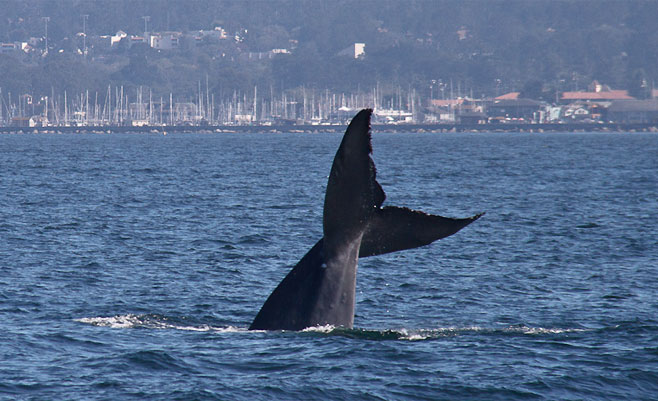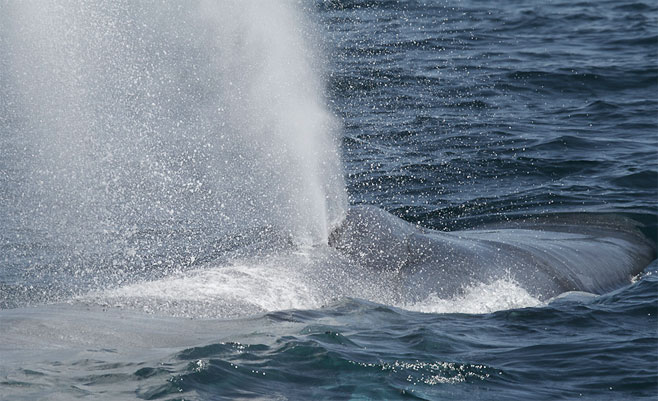|
Balaenoptera musculus (Blue whale)
Sibbald's rorqual, great blue whale, sulphur-bottom, blue rorqual
[English]; blouwalvis [Afrikaans]; Schanelwal, Riesenwal, Blauwal, Breitmauliger
Finnfisch [German]; rorqual de Sibbald, rorqual bleu, baleine bleue [French]
Life
>
Eukaryotes >
Opisthokonta >
Metazoa (animals) > Bilateria > Deuterostomia >
Chordata > Craniata > Vertebrata (vertebrates) >
Gnathostomata (jawed vertebrates) > Teleostomi (teleost
fish) > Osteichthyes (bony fish) > Class:
Sarcopterygii (lobe-finned fish) > Stegocephalia
(terrestrial vertebrates) > Reptiliomorpha > Amniota >
Synapsida (mammal-like reptiles) > Therapsida > Theriodontia
> Cynodontia > Mammalia (mammals)
> Placentalia (placental mammals) >
Laurasiatheria > Ferungulata > Cetartiodactyla (even-toed ungulates and
cetaceans) > Whippomorpha > Cetacea (whales, dolphins and
porpoises) > Family: Balaenopteridae (rorquals)
 |
|
Blue whale just outside Monterey harbor,
California, USA. [photo Jim Scarff ©] |
 |
|
Blue whale blowing in Monterey Bay, California,
USA. [photo Jim Scarff ©] |
 |
|
Blue whale. [Illustration Noel Ashton ©] |
The Blue Whale is the largest animal ever to
have existed or to exist. A Blue Whale averages 25 metres in length,
with a maximum recorded length of 31 metres. Their average weight is
between 80 and 130 thousand kilograms, with a recorded maximum
weight of 178 thousand kilograms. They are huge streamlined animals
with a tiny dorsal fin of around 30 centimetres high and with their
head consiting of about 25% of their body length. They are
predominantly blue-grey in colour, that lightens towards the
underside. Their blow is a single thin column of about 10 metres
high.
Text by Derek Ohland |
